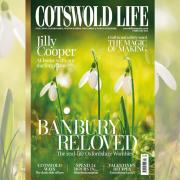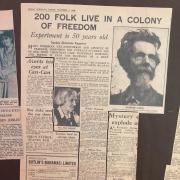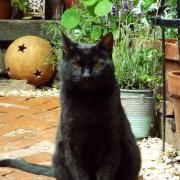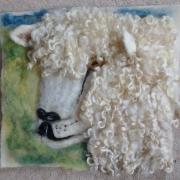This week, I acquired a new piece of furniture. Described as a ‘mule chest’ in the auction catalogue, it is a large, 18th-century trunk, ornately carved in solid oak and, in my opinion, a thing of great beauty. Since buying it, I have asked a few questions and learned that it’s called a ‘mule chest’ not because these chests were made to contain mules (I couldn’t see how that would work), nor to contain mule paraphernalia, but apparently the word ‘mule’ can mean a hybrid of any two animals, so a mule chest is a hybrid of a blanket chest and a chest of drawers. Amazingly, it was less than £100, which was a bargain even for Wotton Auction Rooms, my favourite local auction house.
As I looked more closely at the mule chest, I couldn’t believe that something so old was so easily available. Surely, this should be in a castle, a stately home, or even a museum? I realise that my living in the USA for more than a decade had coloured my view of history a bit. Here in the UK, history is everywhere you look. In London, there’s a bank I know that has been owned and operated by the same family since the 1600s, whereas in Los Angeles where I used to live, it was not unusual to see a company’s signage boasting of having been established as far back as the 1970s. It’s a different perspective. It makes me understand why at least a couple of my American visitors, when they’ve been shown the nice view of Windsor Castle as we drove past it on the M4, wondered ‘Why would they build the castle so close to the freeway?’
SUBSCRIBE to Cotswold Life to hear more from Emma Samms and our other columnists.
But back to my mule chest. It’s no secret that, when it comes to buying furniture, I am a big fan of Wotton Auctions. Before the pandemic, Philip Taubenheim and the team at Wotton had had the foresight to begin conducting their auctions live, over the internet. Initially, as a buyer, I was disappointed as there was no longer an advantage to being there in real life (other than the excellent bacon sandwiches). Competitive bids were now coming in from all around the world. But I’ve learned to embrace this new, global approach, partly because there is still a local advantage (not needing an international courier to get your items home) but also the joy of watching all two, or sometimes three, days of the auction from the comfort of my own kitchen.
Back in January, I was doing just that. Sipping on a cup of tea, still in my dressing gown, doing a bit of paperwork but keeping an eye on the ongoing auction live from Wotton-under-Edge, I spotted a nice decorative item, clicked on ‘Bid now’, assuming my bid would soon be surpassed. It wasn’t, and Philip brought down his hammer and firmly declared ‘Sold!’ But then he recognised my bidding number, looked straight down the lens of the webcam in front of him and said, ‘What do you want THAT for?’ I almost spat out my tea!
You’d think that being such a regular customer that my bidding number is recognised would make me a bit of an antique expert, but clearly I’m not. I didn’t even know what a mule chest was. But that’s OK. It’s more about enthusiasm and personal taste. And feeling safe enough to ask questions. I’d like to think I’m really good at that.
Follow Emma on Twitter: @EmmaSamms1



























